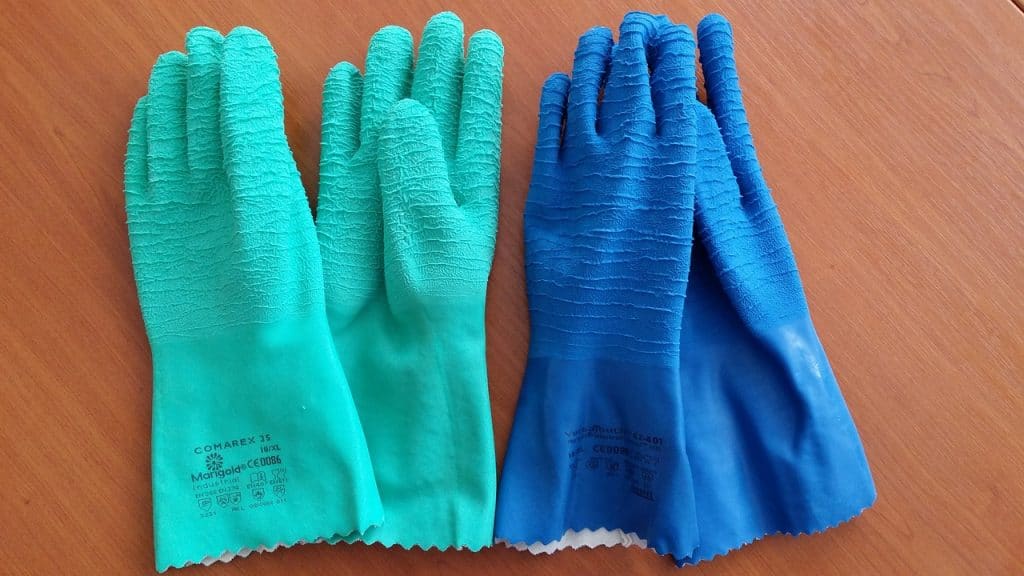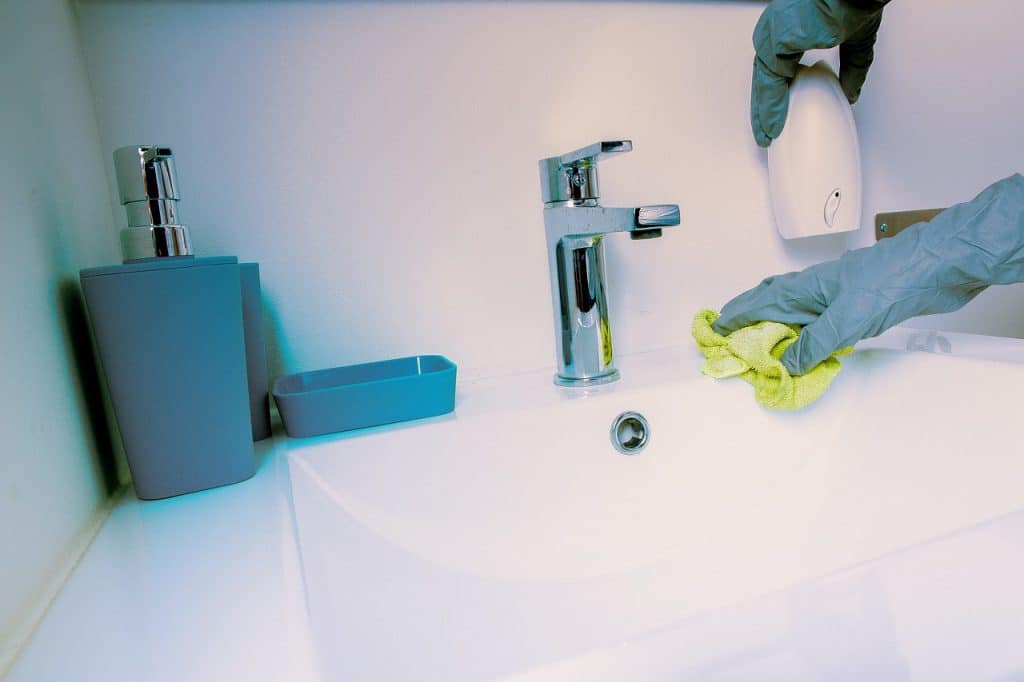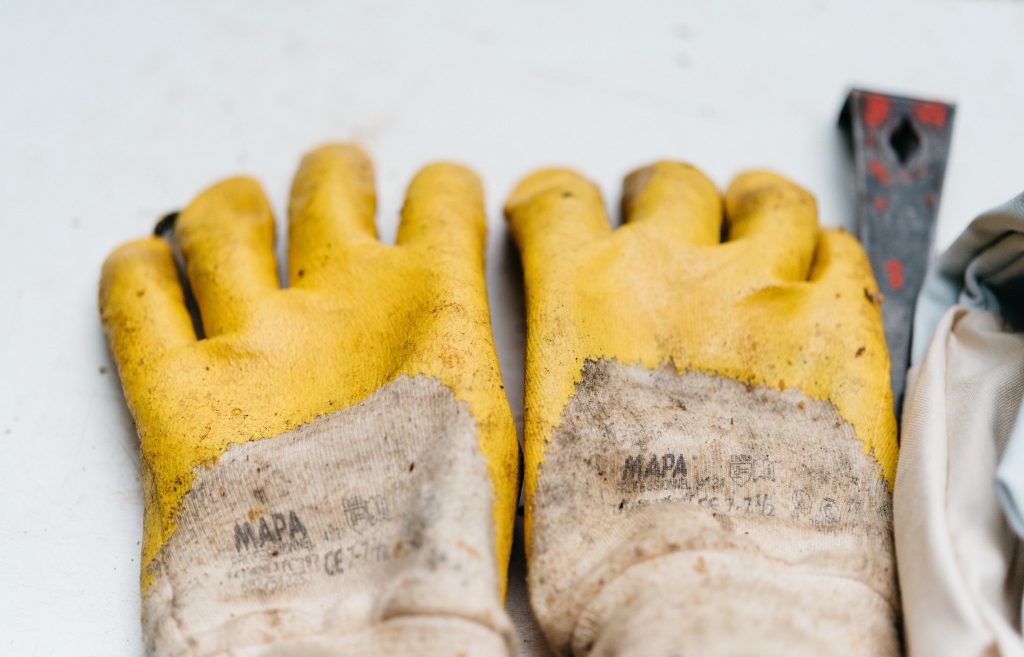Minimize on-the-job injuries and illnesses by following some simple janitorial safety tips designed for protection and prevention.
Most people do all they can to avoid accidents on the job. Yet, in 2015, the Bureau of Labor Statistics determined there were 42,470 job-related accidents or illnesses within the janitorial services industry alone. And while accidents will always happen, employers and employees can reduce the numbers by adhering to just a few janitorial safety tips whenever they’re on the job site.
Janitorial service work comes with inherent hazards. Between slick surfaces, heavy equipment, strong chemicals, and ergonomic stress, any list of janitorial safety tips must cover a vast array of potential threats. The tricky part is identifying all of the risks.
According to the Bureau of Labor Statistics, roughly 37% of the accidents in the janitorial services sector result in musculoskeletal injuries, most commonly caused by trips, slips, falls, and coming into contact with hazardous objects, like equipment or sharps in a medical office. Other common incidences of injury include overexertion in lifting and coming into contact with hazardous substances, like some cleaning chemicals.
In general, offices will pose fewer threats than most other job sites. Construction sites, medical offices, warehouses, and waste management facilities, among others, all likely have additional risks that you’ll want to identify and communicate to your staff.

Make checklists and track your progress with Janitorial Manager. Schedule a free demo right now to find out more!
Communicating your safety plan
Whether you follow these janitorial safety tips or make a list of your own, it won’t help very much if your employees don’t see it. The best way to communicate your safety plan to your teams is to hold a regular safety meeting. Once a quarter, review safety protocols, highlighting any new or outdated developments. Distribute the safety tips to your employees before the meeting, then encourage them to hang on to the tips and refer to them often.
Also, remember that the Occupational Safety and Health Administration (OSHA) has their own safety standard, which is regularly updated. Sending employees to OSHA training or bringing it in-house will ensure that everyone is up to speed on government safety regulations as well.
When you review your safety plan, remember to equip your staff with the tools and equipment they need to stay safe. From necessary things, like rubber gloves and face masks, to heavy-duty gear, like helmets and hazmat suits, providing your staff with the most sophisticated safety equipment helps ensure that your injury list is short—or better yet, nonexistent!
Another thing that’s not so much a part of safety as it is a protection for your business is to make sure that in addition to maintaining janitorial safety tips for your employees, you also maintain proper insurance. Doing so helps make sure that should something go wrong on the job site, your employee has the coverage they need to recover and get back to work, and your business has the coverage it needs to handle any accidents that may happen.

10 Common janitorial safety tips
While it’s impossible to provide a fully comprehensive list of janitorial safety tips without knowing the details of your job sites, this list will give you a solid foundation on which to build your safety plan.
1. Train employees on proper usage of personal protective equipment and require such equipment to be used at all times on the job.
2. Train employees on proper usage of cleaning equipment and only allow designated employees to operate.
3. Require that all chemical substances are kept away from furnaces and other heat sources, as many of them are flammable.
4. Train employees on proper lifting and lowering techniques to avoid common lower back injuries.
5. Use appropriate warning signs for things like wet floors or other hazards posed by the cleaning process. Notify individuals in person whenever possible. Never use something like a desk or garbage bin to block off an area; only caution signs and tape should be used.
Keep track of all your cleaning jobs with Janitorial Manager. Schedule a free demo right now to find out more!
6. Never use harsh chemicals in poorly ventilated areas.
7. Examine electrical cords on equipment before use. Do not use equipment with frayed or damaged cords.
8. Adhere to all OSHA safety regulations, especially in regards to things like bloodborne pathogens.
9. Never stand on desks, chairs, or other surfaces to reach high places. Use step stools or ladders, and make sure they’re secured properly before use. Ask someone to spot you while using ladders.
10. If an injury occurs on the job, report it immediately after it’s under control (i.e., bleeding staunched, ambulance called, etc.). Most janitorial management software includes functionality for reporting job-site injuries, which helps alleviate the administrative burden so your employee can focus on healing and recovery.
Remember, safety is a top priority. Run a tight ship, and everything else will fall in line.


keep up the great piece of work, I read few content on this web site and I conceive that your site is very interesting and has got circles of excellent information.